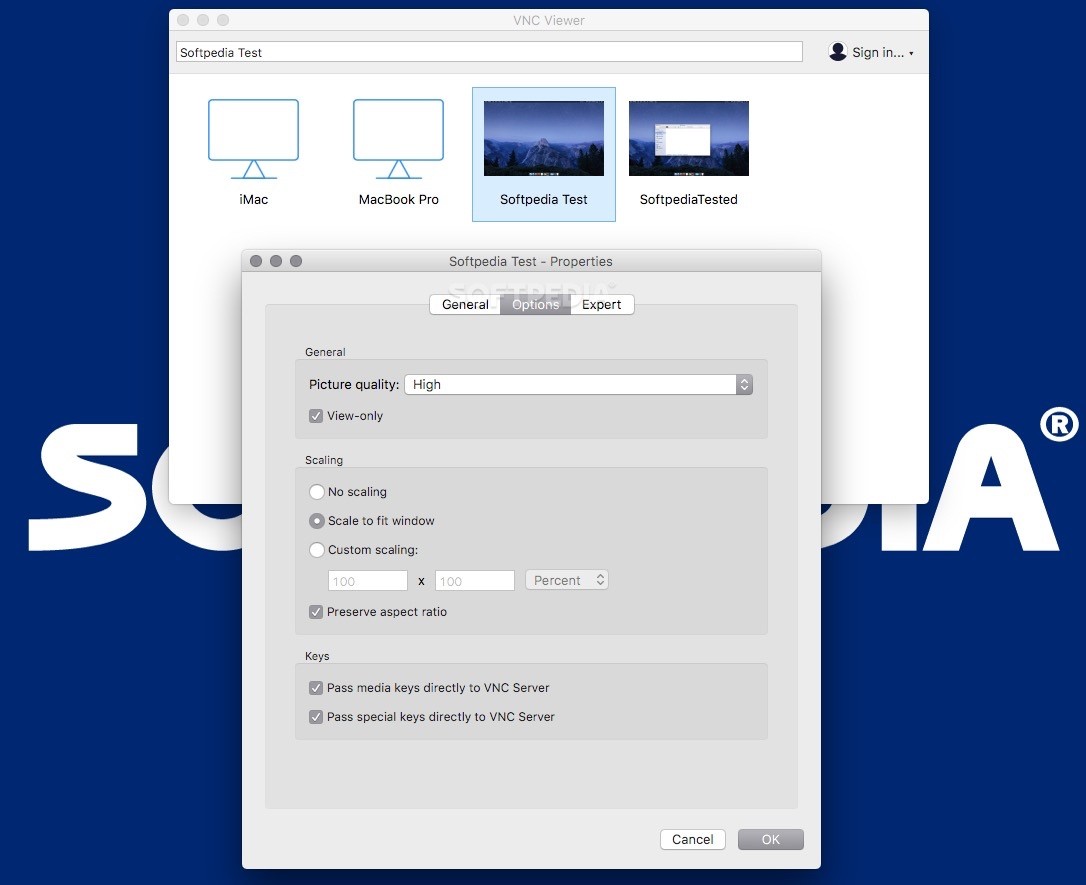

sudo systemctl daemon-reloadĮnable the unit file you just created. You can also change 1280x800 to your desired ĭescription=Start TightVNC server at startupĮxecStartPre=-/usr/bin/vncserver -kill :%i > /dev/null 2>&1ĮxecStart=/usr/bin/vncserver -depth 24 -geometry 1280x800 :%i You should now make VNC a service so that it starts automatically should you ever reboot your server.Ĭreate a new unit file for VNC. A unit file encodes information about a service sudo nano in the following, replacing john with your own user name.

VNC VIEWER DOWNLOAD WINDOWS 10 PASSWORD
In the Password, field, enter your VNC password your created earlier. In the Server field, enter localhost::5901. In the Name field, Enter a profile name of your choice. If you are using Ubuntu Desktop, it comes preloaded with a VNC-capable client called Remmina. Just type “VNC” or “remmina” in the dash to start it. If VNC connects successfully, you should see the default Xfce desktop.

(VNC Viewer is not aware that we are using an encrypted SSH tunnel) If you see a warning about Unencrypted connection, ignore it and click Continue. When prompted for a password, enter the VNC password you created earlier, check Remember Password, and click OK. In the VNC Server field, enter localhost:5901 and click OK. Run VNC Viewer, click File and click New Connection. There are many different VNC viewers for Windows and MacOS, but in this guide we are using VNC Viewer (RealVNC). You should now be able to connect to the VNC server using locahost:5509 with your VNC client of choice. Port 5901 of the remote connection should now be bound to port 5901 on your local machine, creating a secure SSH tunnel. You can now continue to the next step to connect to the VNC server using your VNC client. If the tunnel is up, at the bottom of the log, you should see Local port 5901 forwarding to ip_address:5901 Once logged in, to check if the SSH tunnel is up, right-click the PuTTY title bar to invoke the context menu, then click Event Log. When prompted, enter your Linux password to log in (not your VNC password). In Host Name, enter your non-root Linux username and IP (e.g, Saved Sessions, enter “SSH Tunnel” (you can call this whatever you like).Ĭlick Save and then click Open to start the connection. In the left-hand category menu, go to Session. In PuTTY, select Connection > SSH > Tunnels. You will need the PuTTY client to create an SSH Tunnel. ssh -L 5901:127.0.0.1:5901 -C -N -l john your_server_ipĮnter your Linux password (not your VNC password) and skip to Step 4 below. Replace john with your non-root username and your_server_ip with your server IP. You can create an SSH tunnel easily using terminal. We can do this by binding port 5901 of the remote connection to port 5901 on your local machine. VNC server is now running, but in order to encrypt communications between the VNC client and server, we must create an SSH tunnel and connect through it. Log file is /home/john/.vnc/ubuntu_server:1.log 3. Create SSH Tunnel vncserver New 'X' desktop is ubuntu_server:1 (press CTRL + X, press Y and then press ENTER) This will tell VNC to start the Xfce desktop environment when VNC starts. cp ~/.vnc/xstartup ~/.vnc/xstartup.bakĪdd the following to the bottom of the file. Log file is /home/john/.vnc/ubuntu_server:1.log Starting applications specified in /home/john/.vnc/xstartup xauth: file /home/john/.Xauthority does not existĬreating default startup script /home/john/.vnc/xstartup You can skip this if you don’t require it. You will also be asked if you want a view-only password where the user can only view and not control the remote server. Generate a password 8 chars long, any longer and it will be truncated.
VNC VIEWER DOWNLOAD WINDOWS 10 INSTALL
sudo apt install xfce4 xfce4-goodies tightvncserver 2. Press y and ENTER if prompted to install. Install Xfce and VNCīegin by updating the package lists.

VNC Viewer (RealVNC), TightVNC or UltraVNC.We recommend the following: Windows VNC Clients You will also need to download and install a VNC client for your OS. Initial Server Setup for Ubuntu 16.04 / 17.10 for more details.Initial Server Setup for Ubuntu 18.04 / 19.10.You should use a non-root user account with sudo privileges.


 0 kommentar(er)
0 kommentar(er)
